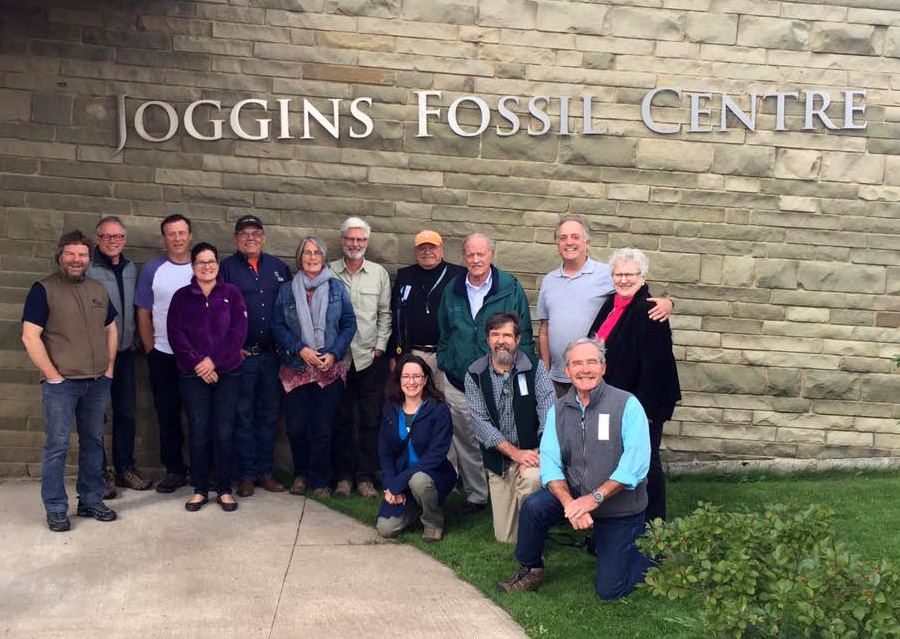On Saturday, September 30, the IAT held its annual North America Council Meeting at Joggins Fossil Centre, Nova Scotia, part of Joggins Fossil Cliffs UNESCO World Heritage Site. The meeting included chapter updates, website and social media, mapping, international gatherings, and fundraising.
Continue readingIAT North America Meeting held at Mabou, NS
On April 8 & 9, IAT North America held its Annual Spring Council Meeting in Mabou, Nova Scotia, a Gaelic speaking region of Cape Breton.

The two-day event held at Duncreigan Inn was an opportunity for the U.S. and Canadian chapters to gather to discuss common issues and joint initiatives, as well as provide updates on regional and international progress.

Day One began with a welcome from IAT Nova Scotia hosts Claire MacNeil and John Calder followed by chapter updates, beginning with Maine. Don Hudson discussed a new IAT route through a proposed national forest reserve, the Pioneers of Appalachian/Caledonian Geology website series, as well as opportunities surrounding next year’s ATC Biennial in Maine.
IAT New Brunswick’s Poul Jorgensen discussed his chapter’s new southern route that will connect with IAT Nova Scotia. The route includes sections of the Trans Canada Trail and crosses Stonehammer UNESCO Global Geopark.
Leo Gill of IAT Prince Edward Island discussed the success his chapter has had developing trails across the island, connecting to IAT New Brunswick across the Confederation Bridge in the north and IAT Nova Scotia via the Woods Island ferry in the south.
Claire MacNeil and John Calder described potential IAT routes in Nova Scotia, from the Cape to Cape and Trans Canada Trails linking to New Brunswick and the proposed Sea Wall Trail at the northeastern end of Cape Breton Island.

Paul Wylezol of IAT Newfoundland & Labrador completed the chapter updates with a presentation on the IATNL’s plan to develop a UNESCO Global Geopark across the Bay of Islands Ophiolite Complex and commemorate (in 2017) the 250th Anniversary of James Cook’s survey and map of Western Newfoundland, spanning the entire route of the IAT from Port aux Basques in the south to Cape Raven (near the Norse UNESCO World Heritage Site at L’Anse aux Meadows) in the north. He also gave an update on the EU funded Drifting Apart project.
After the chapter updates, representatives posed for the traditional group mugshot before heading to the Mull Cafe and Deli for a well-earned meal and refreshments.

The evening session began with a presentation by David Williams on the planned Seawall Trail at the northeastern end of Cape Breton Island, which may become an extension of IAT Nova Scotia. It was followed by a presentation on the Trans Canada Trail in Eastern Canada by trail guide author Michael Haynes.
The last presentation of the day was given by environmentalist Norris Whiston, who gave a presentation on the ecological environment and various plant species found along the IAT Nova Scotia trail route.
Day Two of the meeting was a ‘Nuts and Bolts’ session reserved for common issues and projects, including website and social media, maps and guides, and sponsorship guidelines. Nova Scotia’s John Calder (who is a committee member with the Canadian Geoparks Network) closed out the meeting with a presentation on UNESCO Global Geoparks, including the planned Fundy Rim Geopark in Nova Scotia.

A special thanks goes out to Claire MacNeil, John Calder and the staff at Duncreigan Inn for for a pleasant and productive IAT North America Council Meeting in Cape Breton.
Thanks also to guest presenters David Williams, Michael Haynes and Norris Whiston for their interesting presentations. Good luck to you all on your various projects.

